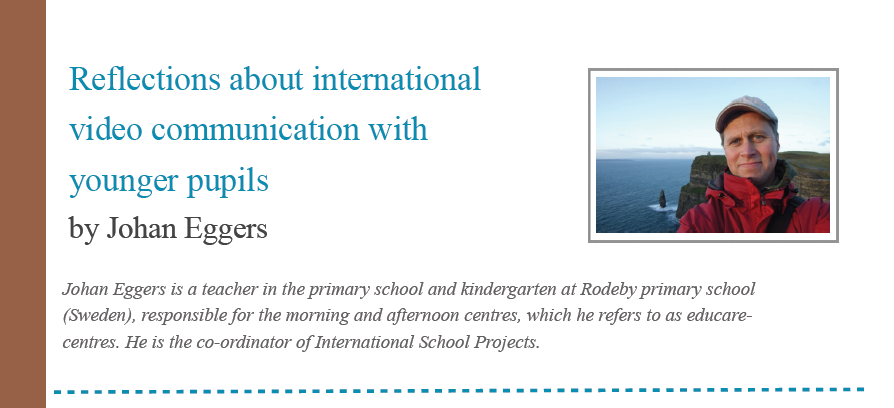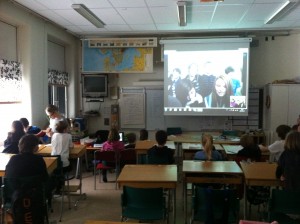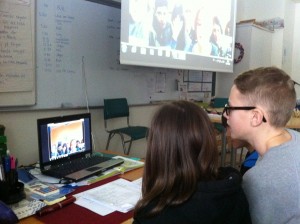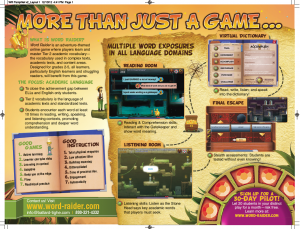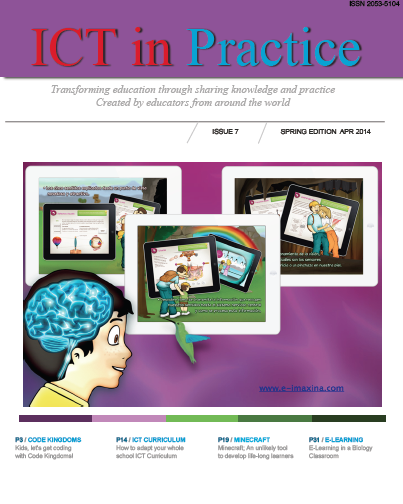Hatırlarsanız 5 Aralık`da Ankara`da FatihETZ konferansında yapmış olduğum sunumda İngıltere´de her okulda bir teknoloji koordinatörü olduğunu söylemiştim. Tabiki hem vakit yetersizliğinden, hem de heyecandan bunun sebepleri hakkında detaylı bilgi verme fırsatım olmadı. Öncelikle tekrar vurgulayalımki teknoloji koordinatörlerinin teknisyenlerle bir alakası yoktur. Zaman zaman diğer öğretmenlere teknik konularda yardımcı olduğumuz doğrudur, ancak bu sadece vaktimiz olduğu zaman mümkün. Büyük okullarda zaten tam zamanlı bir teknisyen vardır, küçük okullarda özel firmalardan haftada genellikle 2 gün görev yapacak elemanlara iş verirler.
Peki, eğitim teknolojileri koordinatörlerinin görevi nedir?
Ben sizlerle ilkokullarda çalışırken iş sözleşmemde yazılı olan listeyi paylaşmak isterim. Bu listeye gore ICT koordinatörünün görevleri:
- Teknolojinin eğitimdeki rolünün ilköğretim müfredatına uygun olarak geliştirilmesi
- Diğer branş derslerinin yöneticileri ile birlikte çalışarak uzun zamanlı Eğitim Teknolojisi Müfredatı yazmak
- Eğitim teknolojisine iliskin SMART hedeflerin, eğitim planının ve bütçenin hazırlanması
- 1 yıllık kısa sureli ve 3 yıl uzun dönemli teknik araç ve gereç ihtiyaç raporunun yazılması
- Teknisyen ve diğer teknik bilgiye sahip kişilerle beraber okulun teknoloji altyapısının geliştirilmesi
- Öğretmen ve öğretmen yardımcılarının en son teknolojik yeniliklerden faydalanmaları için ihtiyaçları doğrultusunda, hizmet içi eğitim programı hazırlamak
- Öğretmen ve ögretmen yardımcılarını teknolojiyi derslerinde kullanmaları konusunda desteklemek
- Ögrencilerin teknoloji alanındaki düzey ve bilgilerini okul çapında bilimsel yöntemlerle değerlendirmek
- Teknoloji eğitimi standardlarını düzenli olarak analiz etmek ve sonuçları okul yoneticileri ve velilerle paylaşmak.
- Teknolojinin uluslarası okullarla ortaklaşa yürütülen projelerde kullanılmasına öncülük etmek
- Özel eğitime ihtiyacı olan çocuklarin daha başarılı olmaları için, Özel eğitim müdürü ile birlikte teknolojinin ne şekilde kullanalıcağına dair program hazırlamak
- Teknolojinin bütün ders alanlarında kullanılmasına imkan verecek projeler hazırlamak
- Teknoloji program ve gereçlerinin en verimli şekilde kullanılmasını sağlamak
- Sanal eğitim programlarının bütün ögretmen ve öğrenciler tarafından düzenli olarak kullanılmasına destek olmak
Ben Wilbury İlköğretim okulunda ilk işe başladığım zaman, okul müdüremiz ve iş yöneticimiz beni toplantıya davet ettiler. Bana ilk sordukları soru vizyonumun ne olduğu idi. Ben okulda biraz vakit harcamadan ve okulun eğitime olan bakış açısını anlamadan bu soruya cevap veremiyeceğimi söyledim. Okul müdüremiz benimle aynı fikirde idi. Bana araştırma yapıp, okul yönetim kuruluna sunmak üzere 4 hafta içerisinde bir rapor hazırlamamı tavsiye ettiler.
Önce teknisyenle okuldaki teknolojik altyapı, araç ve gereçler üzerine sohbet ettik. Daha sonra derslere katılıp öğretmen ve öğrencileri gözlemleyip, görüşlerini sordum. Son olarak da her branş ders yöneticisi ile teknoloji müfredatı ile kendi alanları arasındaki bağlantıyı nasıl algıladıkları üzerine konuştuk. Bütün bu bilgiler benim okulun 1 ve 3 yıllık planlarını hazırlamam için yeterli idi, ancak vizyonumuzu belirlemek için okul yönetileri tarafından öğrencilerin ihtiyaçlarına göre karar verilen hedefleri bilmem şarttı. Bu bilgileri topladıkdan sonra raporumu yazdım. Bu raporda:
- Öğrencilerin yüzde 62´sinin ilkokulu beklenen düzeyin altında teknolojik bilgilerle bitirdiği
- Okulda 1000 öğrenci olmasına ragmen sadece bir bilgisayar labının olması sonucu, öğrencilerin haftada sadece 40 dakika okulda teknoloji kullanmaları ve bilgisayarlar çok eski olduğu için, açmanın 15 dakikayı bulduğu
- Öğrencilerin yüzde 53‘ünün evde kendilerine ait bir bilgisayarı olmadığı, aile bilgisayarının da genelde yaşı daha büyük olan kardeşlerce kullanıldığı
- Tablet teknoloji, kamera vs. araçların okulda bulunmaması
- Öğretmenlerin büyük çoğunluğunun teknolojik bilgilerinin yetersizligi
- Wi-Fi ağının olmayışının okuldaki 30 laptopun kullanılmayıp, kenara atılmasına sebep olduğu konularına değindim.
Ben bu bilgileri kullanarak hem okul için vizyon raporumu hem de altyapı planımı hazırladım. 2014 yılında üniversiteye geçtigimde okul hem ulusal ve uluslar arası yarışmalarda teknoloji alanında bir çok ödül kazanmıştı hem de İngiltere parlementosu ve eğitim bakanlığı tarafından bu alanda örnek okul olarak seçilmişti. Bu başarının sebebi, sadece aldığımız araç ve gereçler değildi tabiki. Kendi okulumuzun ihtiyacına uygun olarak geliştirdiğimiz disiplinler arası müfredatımız, sürekli öğretmen eğitimi, ailelere bu vizyonda yer vermemiz ve öğrencilere karar verirken danışmamız da bu başarıya katkıda bulunmuştur.
Yıllarca bu görevi yaptıkdan sonra daha iyi anladım ki, bir okulun en etkili eğitim aracı teknoloji değil, öğretmenleridir ve onlara ihtiyaçlarına ve okulun eğitim hedeflerine uygun bir şekilde sürekli eğitimden yararlanma imkanı verilmeli. Ancak bu şekilde okullar bilgi çağının gerektirdiği bilgi ve becerileri öğrencilerine kazandırabilecek bir eğitim programı oluşturabilirier. Teknolojik araç ve gereçlere milyonlar harcanabilir, hatta binlerce içerik de geliştirilebilir. Ancak artık kabul etmeliyiz ki, herkese uyan bir elbise tasarlanamaz, yani eğitimin kişiselleştirilmesi gereklidir . Londra´daki bir çocukla, Londra dışındaki bir çocuğun eğitim ihtiyaçları aynı değildir, dolayısıyla kullanılan aktiveteler ve araçlar da farklı olmalıdır. Verimli sonuç alınması için teknolojik araç ve gereçleri her okulun vizyonu doğrultusunda, etkili bir şekilde kullanılmasını planlayıp, gözlemleyecek bu alanda yetişmiş bilgili eğitimcilere ihtiyaç vardır.
İşte bu noktada bilişim öğretmenlerine çok, hem de çok ihtiyacımız var! Eğitimin bilgi çağını yakalaması için gerekli olan vizyonu her okulda tasarlayıp okulları geleceğe taşıyacak eğitim teknolojisi liderlerine çok, hem de çok ihtiyacımız var!
Türkiye´mizin her köşesindeki her okulda bir eğitim teknolojisi koordinatörü görmek dileğiyle…
Not: Umarım Türkçem anlaşılır, eğer yanlış görürseniz lütfen benimle iletişime geçin.






